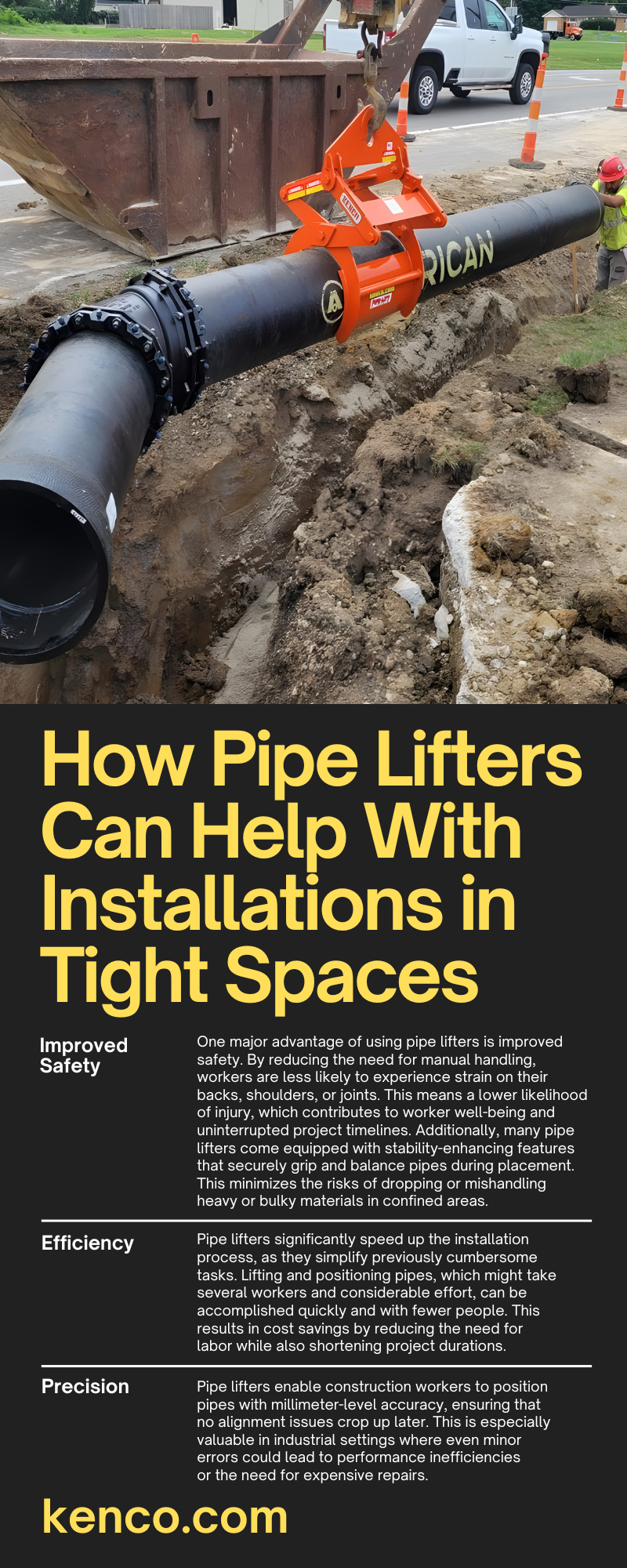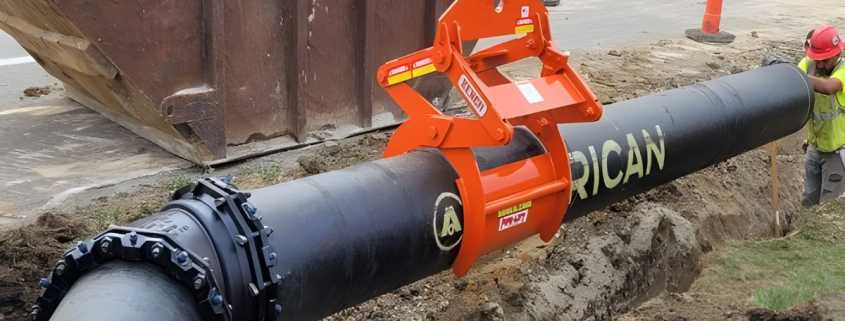How Pipe Lifters Can Help With Installations in Tight Spaces
Pipe installations are an essential component of construction, whether for plumbing systems, gas lines, or other infrastructure needs. Yet, they are rarely as straightforward as they appear, particularly when tight or confined spaces are involved. Construction workers regularly face physical constraints, safety concerns, and logistical challenges in such environments, making these installations a complex endeavor.
This is where pipe lifters come into play. Designed to make lifting, positioning, and securing pipes more efficient, these tools are rapidly becoming indispensable on job sites worldwide. Learn how pipe lifters can help with installations in tight spaces.
Understanding the Challenges of Tight Spaces
The nature of confined working environments often complicates pipe installation projects.
Limited Maneuverability
Limited room for maneuverability, obstructions from other structures, and inadequate lighting are just some of the obstacles construction workers face in tight spaces. Moving large, unwieldy pipes into position becomes particularly hazardous in these scenarios. Workers may have trouble maintaining proper posture or leverage, increasing the risk of strain injuries and accidents.
Installation Errors
Furthermore, relying on manual lifting or makeshift solutions in these limited spaces can lead to installation errors. Misaligned pipes can cause operational inefficiencies, water leakages, or even complete system malfunctions over time. The difficulty of achieving precision under these physical constraints means that projects often take longer than anticipated and require additional resources, contributing to spiraling costs.
Worker Safety Concerns
Tight spaces also heighten concerns about worker safety. With reduced visibility and restricted access, the potential for slipping, falling, or mishandling materials grows exponentially. Risky practices often arise when workers feel pressured to meet deadlines, further compounding the dangers. These challenges pave the way for innovative tools and strategies that mitigate risks while ensuring high-quality results.
Benefits of Using Pipe Lifters
Pipe lifters introduce an ideal solution to the many challenges posed by tight spaces in construction. By automating or easing the process of lifting and aligning pipes, these tools bring several key benefits to the table.
Improved Safety
One major advantage of using pipe lifters is improved safety. By reducing the need for manual handling, workers are less likely to experience strain on their backs, shoulders, or joints. This means a lower likelihood of injury, which contributes to worker well-being and uninterrupted project timelines. Additionally, many pipe lifters come equipped with stability-enhancing features that securely grip and balance pipes during placement. This minimizes the risks of dropping or mishandling heavy or bulky materials in confined areas.
Efficiency
Efficiency is another critical benefit. Pipe lifters significantly speed up the installation process, as they simplify previously cumbersome tasks. Lifting and positioning pipes, which might take several workers and considerable effort, can be accomplished quickly and with fewer people. This results in cost savings by reducing the need for labor while also shortening project durations.
Precision
Precision is another area where pipe lifters shine. Achieving proper alignment and accurate placement is crucial for the long-term functionality of any installation. Pipe lifters enable construction workers to position pipes with millimeter-level accuracy, ensuring that no alignment issues crop up later. This is especially valuable in industrial settings where even minor errors could lead to performance inefficiencies or the need for expensive repairs.
Organized Job Site
While these benefits are remarkable, pipe lifters also foster a more organized and professional job site. Crews are less reliant on improvisations or temporary solutions, opting instead for purpose-built equipment that can meet the specific demands of the work. This approach elevates productivity and instills confidence among construction teams in their ability to tackle complex installations seamlessly.
Types of Pipe Lifters Available
There are several types of pipe lifters, and construction needs can vary significantly from one project to another. Understanding the different types of pipe lifters available is essential for maximizing their effectiveness in specific applications.
Mechanical Pipe Lifters
Mechanical pipe lifters are among the most common types. Using simple mechanisms, these lifters raise and lower pipes with minimal physical effort from workers. Lightweight and portable, mechanical lifters are ideal for small to medium-sized projects with limited accessibility.
Hydraulic Pipe Lifters
Hydraulic pipe lifters, on the other hand, offer higher lifting capacities and are better suited for heavier pipes or more complex installations. These systems use hydraulic pressure to lift loads effortlessly and often come with fine-tuning controls for high precision. Although they are bulkier than their mechanical counterparts, hydraulic lifters are indispensable on projects that involve heavy-duty applications.
Vacuum Pipe Lifters
For jobs requiring extreme levels of accuracy, vacuum pipe lifters are an excellent choice. These lifters use suction technology to grip pipes securely, reducing the risk of slippage and providing enhanced control during placement. While they may require power sources to operate, their reliability in delicate installations makes them a popular choice for specialized tasks.
Magnetic Pipe Lifters
Magnetic pipe lifters are another option worth considering, particularly for projects involving metallic pipes. These lifters rely on magnetic force to provide a strong grip, facilitating quick and safe lifting. They can be a versatile addition to a job site where both speed and safety are primary considerations.
Choosing the right pipe lifter depends heavily on the specific requirements of your project. Factors like pipe material, weight, diameter, and the available workspace will all influence the ideal choice. Regardless of the type, every pipe lifter offers a combination of safety, ease, and accuracy that can streamline even the most challenging installations.
Pipe Lifters: Game-Changers for Construction
Knowing how pipe lifters can help with installations in tight spaces transforms the way construction workers approach these tasks. Pipe lifters alleviate many of the logistical and physical constraints associated with confined environments, enabling workers to complete their projects efficiently, safely, and with greater precision. By reducing the need for manual lifting, minimizing human error, and decreasing project timelines, pipe lifters are proving to be invaluable assets for both small-scale and large-scale construction projects.
Investing in the right pipe lifter can make all the difference on your next job site. Whether you’re dealing with narrow corridors or tight corners, these tools provide a reliable solution that eliminates the guesswork and physical strain associated with traditional methods. Take the time to explore the wide range of pipe lifters available and consider how incorporating them into your workflow could revolutionize the way you work.
A pipe lifter from Kenco Corporation can effortlessly lift a variety of pipes. If you’re looking for the safest and most efficient way to move pipes for a wide range of professional applications, contact us today to learn more.





Leave a Reply
Want to join the discussion?Feel free to contribute!